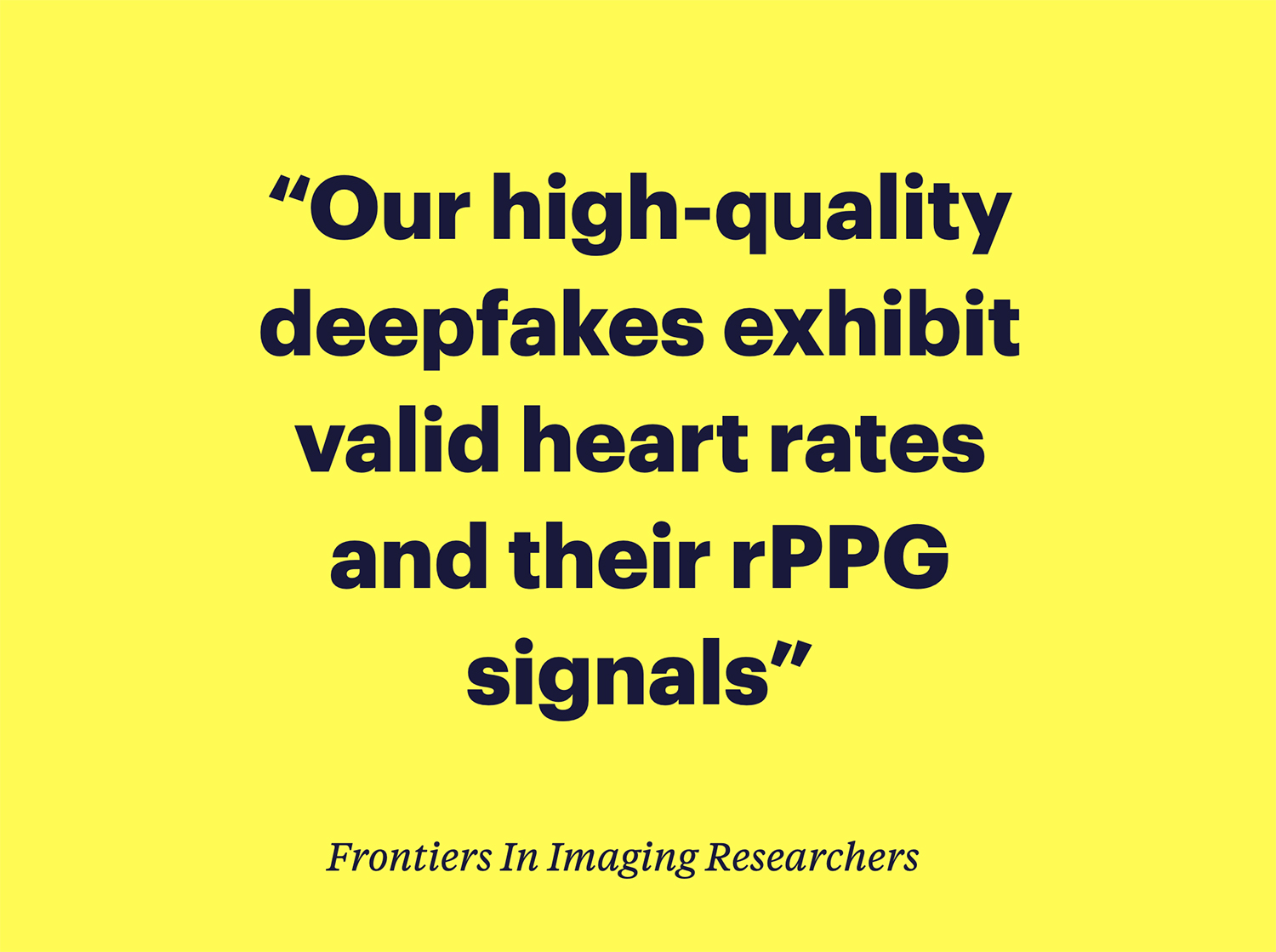
Scientists have believed that deepfake videos lacked one crucial biological signature – skin color variations. Humans skin has subtle variations based on their pulse and deepfakes could never replicate it.
The signal of this variation is called remote photoplethysmography (rPPG), and it was always the best way to detect a deepfake from a real image. But now that signal doesnt work. Frontiers in Imaging revealrs that new advanced deepfakes actually preserve those heart related signals from the source videos which makes them 100% undetectable.

“Here we show for the first time that recent high-quality deepfake videos can feature a realistic heartbeat and minute changes in the color of the face, which makes them much harder to detect,” says Peter Eisert, a professor at Humboldt and the study’s lead author told Popular Science.
The study which was conducted by researchers in Germany tested multiple deepfake generation techniques against videos where the actual heart rate was measured with medical equipment.
